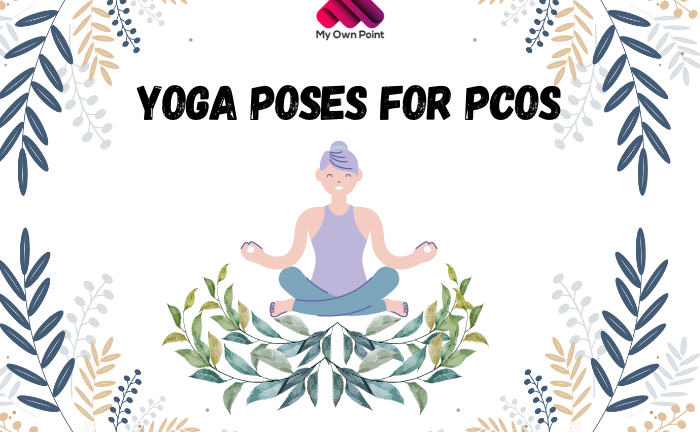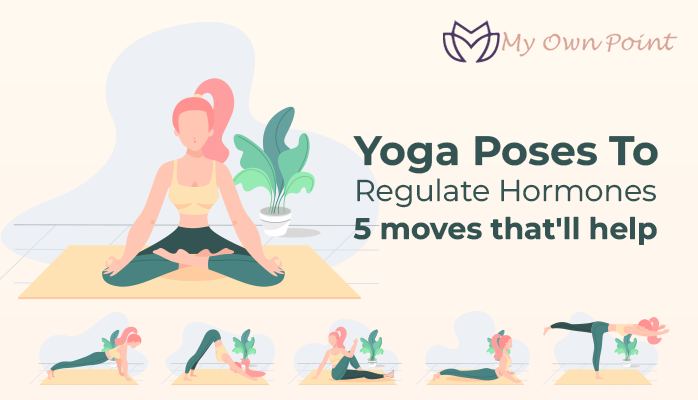Polycystic Ovary Syndrome (PCOS), also known as Polycystic Ovary Disease (PCOD), is a common hormonal disorder in women of childbearing age. Symptoms include irregular periods, weight gain, acne, and infertility, often caused by insulin resistance and hormone imbalances. While doctors usually suggest medication and lifestyle changes to manage PCOD, yoga provides a natural way to balance hormones, lower stress, and improve health. Here, specific yoga poses for PCOS can help and support hormonal balance, focusing on the endocrine system, reducing stress, and boosting reproductive health.
Also Read: What is Balanced Diet? Definition, Benefits, and Examples
Benefits of Yoga for PCOS
Before diving into the poses, let’s understand how yoga can benefit women with PCOD:
- Hormonal Balance: Yoga helps control the endocrine glands, promoting a balanced release of hormones such as insulin and androgens.
- Stress Reduction: Regular practice lowers cortisol levels, a stress hormone that can worsen PCOD symptoms.
- Improved Blood Circulation: Yoga boosts blood flow to the pelvic area, which helps ovarian health.
- Weight Management: Yoga can help with weight loss by boosting metabolism and lowering stress-related eating.
- Detoxification: Some poses help the liver work better, which improves detoxification and hormone balance.
Also Read: Embrace Top 5 Yoga Poses for Period Cramp Relief
Step-by-Step Guide to Yoga Poses for PCOS
Annu SeepaladminEdit Profile
1. Supta Baddha Konasana (Reclining Bound Angle Pose)
How to Do It:
- Lie flat on your back on a yoga mat.
- Bend your knees and bring the soles of your feet together, allowing your knees to drop outward.
- Use cushions or blocks under your knees for support if needed.
- Place your hands by your sides, palms facing up, or rest them on your belly.
- Close your eyes, breathe deeply, and relax in this pose for 5-10 minutes.

Benefits: This pose opens the hips and boosts blood flow to the pelvic area. It helps balance hormones and ease menstrual pain.
2. Bhujangasana (Cobra Pose)
How to Do It:
- Lie on your stomach with your legs extended and feet together.
- Place your hands under your shoulders, elbows close to your body.
- Inhale deeply, press into your hands, and lift your chest off the floor, extending your spine.
- Keep your elbows slightly bent and your gaze forward.
- Hold the pose for 15-30 seconds, breathing deeply.
- Exhale and gently lower your chest back to the floor.
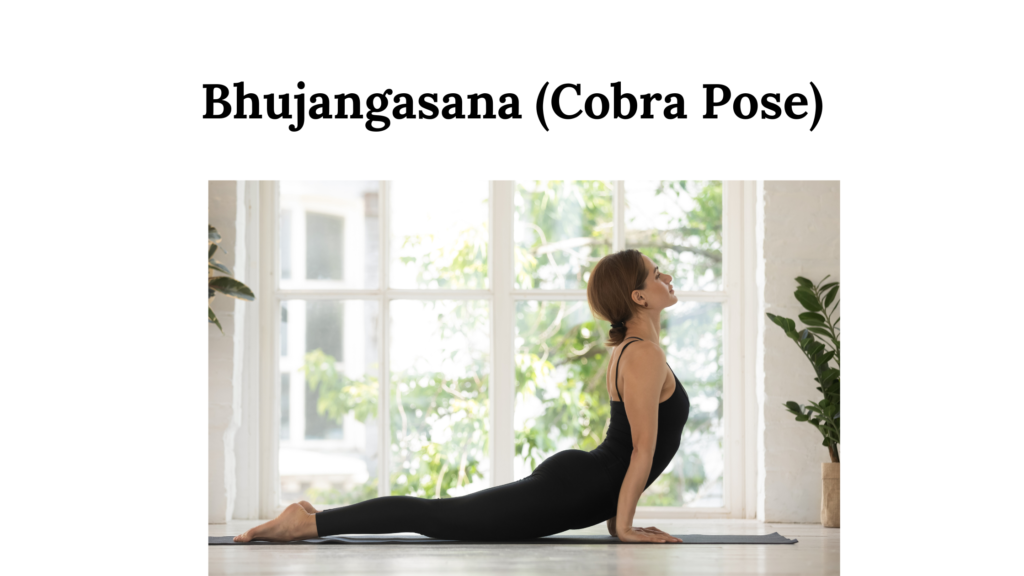
Benefits: Cobra posture is known to improve digestion and stimulate the abdominal organs, which can help balance hormones.
3. Dhanurasana (Bow Pose)
How to Do It:
- Lie on your stomach with your legs together and arms by your sides.
- Bend your knees and reach back to grasp your ankles.
- Inhale and lift your chest and thighs off the floor, pulling your ankles with your hands.
- Hold the pose for 20-30 seconds, breathing steadily.
- Exhale and gently release the pose, lowering your body back to the mat.
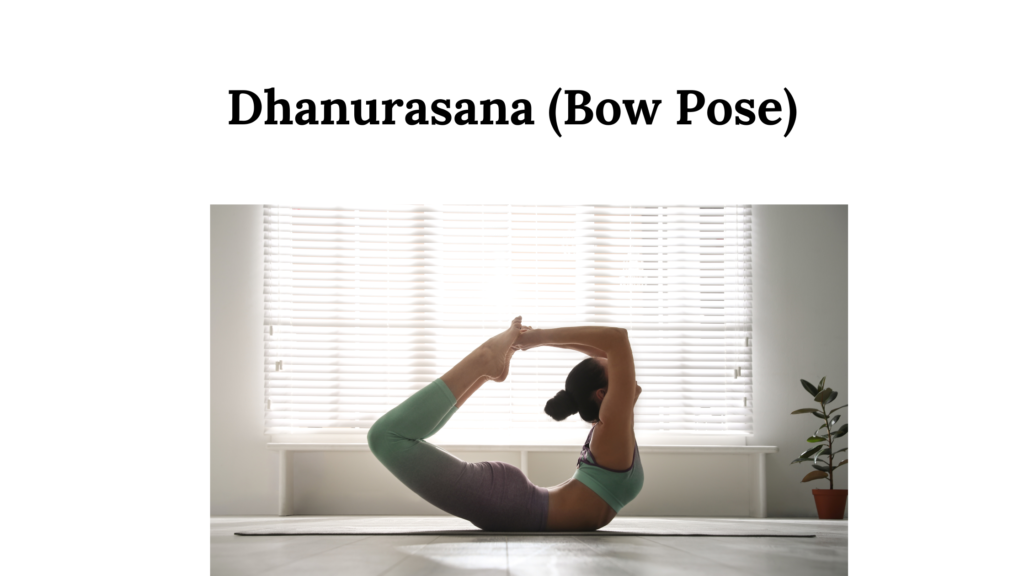
Benefits: Bow Pose yoga poses open the body’s front line, boosts the reproductive organs, and increases blood flow to the pelvic area.
Also Read: 10 Best Sunscreens for Oily Skin Dermatologist Recommended In India
4. Setu Bandhasana (Bridge Pose)
How to Do It:
- Lie on your back with your knees bent and feet flat on the floor, hip-width apart.
- Place your arms by your sides, palms facing down.
- Inhale and press your feet into the floor as you lift your hips toward the ceiling.
- Clasp your hands under your back and press your arms into the floor for support.
- Hold the pose for 30-60 seconds, breathing deeply.
- Exhale and slowly lower your hips back to the floor.
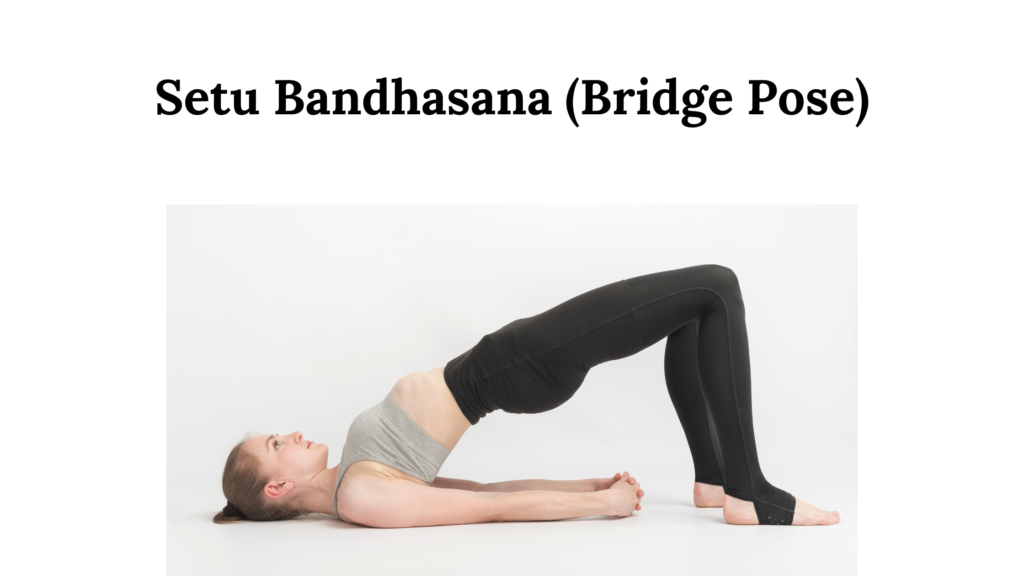
Benefits: Bridge yoga poses for PCOS helps balance hormones by activating the thyroid gland, essential for metabolism and reproductive health.
5. Ardha Matsyendrasana (Half Lord of the Fishes Pose)
How to Do It:
- Sit on the floor with your legs extended.
- Bend your right knee and place your foot outside your left thigh.
- Bend your left knee, bringing your left foot near your right hip.
- Inhale, lengthen your spine, and place your right hand behind you for support.
- Exhale and twist to the right, bringing your left arm around your right knee.
- Hold the pose for 30-60 seconds, then release and repeat on the other side.
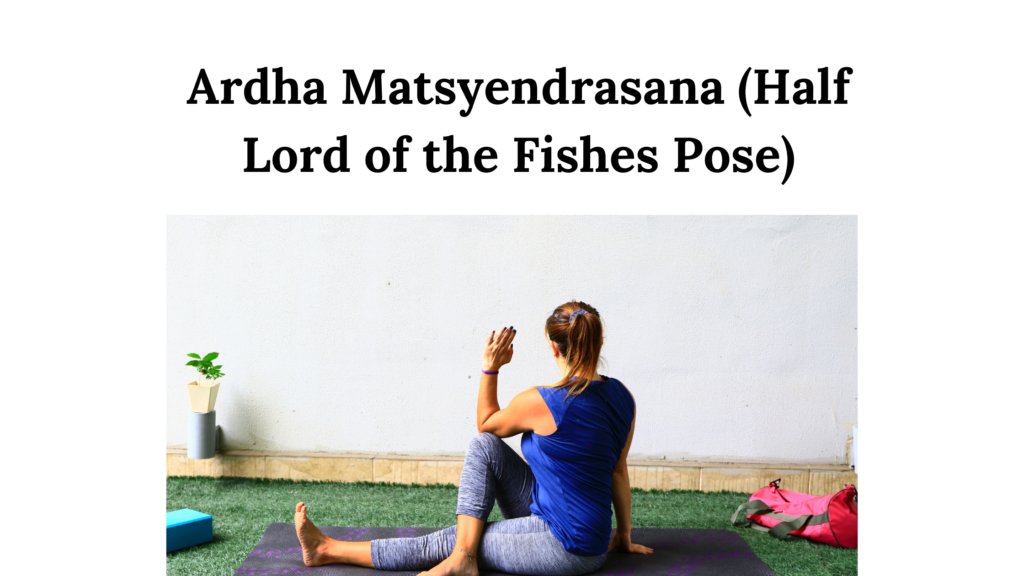
Benefits: This twisting pose massages the stomach organs, helping digestion and detoxification, which can assist in managing PCOD symptoms.
6. Malasana (Garland Pose)
How to Do It:
- Stand with your feet slightly wider than hip-width apart.
- Bend your knees and lower your hips into a squat, keeping your heels on the floor.
- Bring your palms together in front of your chest, pressing your elbows against the inner knees to open the hips.
- Hold the pose for 1-2 minutes, breathing deeply.
- To release, inhale and straighten your legs.
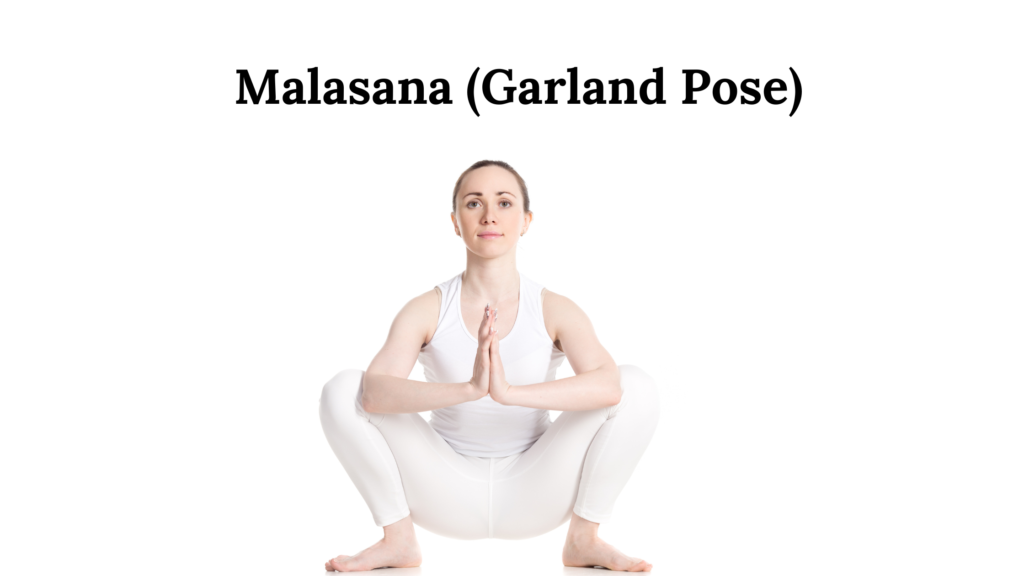
Benefits: Malasana stretches the hips, helps digestion, and boosts blood flow to the pelvic area, which can ease menstrual issues.
Also Read: Pilates vs. Yoga: Which is More Effective for Weight Loss?
7. Shavasana (Corpse Pose)
How to Do It:
- Lie flat on your back with your legs slightly apart and arms by your sides, palms facing up.
- Close your eyes and take slow, deep breaths.
- Focus on relaxing each part of your body, starting from your toes and moving up to your head.
- Stay in this pose for 5-10 minutes.

Benefits: Shavasana helps you relax deeply, lowers stress, and lets your body absorb the benefits of yoga, which is essential for hormonal balance.
Tips for Practicing Yoga for PCOS
- Consistency is Key: Practice these yoga poses regularly, ideally 4-5 times a week, to see the best results.
- Focus on Your Breath: Deep, mindful breathing enhances the effectiveness of each pose and promotes relaxation.
- Listen to Your Body: Modify the poses as needed and avoid pushing yourself too hard, especially during menstruation.
- Combine with a Healthy Lifestyle: Along with yoga, maintain a balanced diet, stay hydrated, and get adequate sleep to support overall health.
Conclusion
Yoga poses for PCOS help with managing hormonal imbalance, lowering stress, and improving overall health. Adding these yoga poses to your daily routine can help ease symptoms and enhance your quality of life. Be patient and consistent with your practice, and talk to a healthcare professional if you have any concerns or health issues.
Also Read: The Key Of Happiness : Sudarshan Kriya Art of Living

